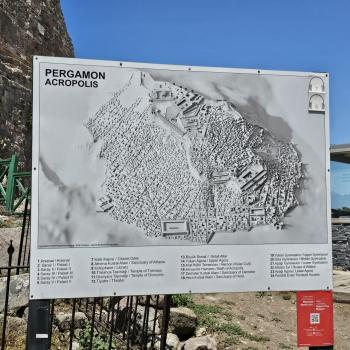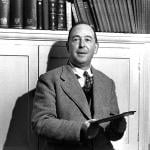 Paul Doherty is nothing if not a prolific novelist. I honestly can’t keep up with all the different novels and series he keeps writing under the names of P.C. Doherty or Paul Doherty. How exactly he is doing this whilst still a middle school teacher is also a mystery. And speaking of a mystery his latest one called The Mysterium (out in October 2010 in the U.K.) is a fine addition, the 17th, to his series which features super sleuth and medieval clerk to King Edward Hugh Corbett.
Paul Doherty is nothing if not a prolific novelist. I honestly can’t keep up with all the different novels and series he keeps writing under the names of P.C. Doherty or Paul Doherty. How exactly he is doing this whilst still a middle school teacher is also a mystery. And speaking of a mystery his latest one called The Mysterium (out in October 2010 in the U.K.) is a fine addition, the 17th, to his series which features super sleuth and medieval clerk to King Edward Hugh Corbett.
What are the elements that make for a good medieval murder mystery? For one thing, the historical detail needs to be right. Some novelists just assume that anything approaching verisimilitude is fine since they are writing fiction, but not so. You need to get the context right. This means, among other things, you need to be a student of history, and Paul Doherty is not merely a student of English history, he is an authority on the Edwardian reign and has written an important historical monograph on some interesting aspects of that period.
Secondly, a good medieval mystery needs to come to grips with the profoundly Christian ethos which had penetrated all of life in England in those days, including its laws and political life. There was no separation of church and state at all. And when a refugee sought sanctuary in a church, the law could not touch them, at least until someone gave them up. I especially like the depiction of Hugh Corbett as not merely the King’s hawk and sleuth and uber-clerk, but as a devout Christian who sees the pursuit of justice and truth in his job as also part of his commitment to his Christian faith. This is very refreshing. Here you have a man as likely to go to church as to go to a pub, as likely to pray and take the sacrament as investigate a crime. My only complaint is that in recent novels in this series we have not seen enough (or indeed anything) of his lovely wife Maeve and their family. But maybe that will change considering the manner in which this novel ends—- which is quite surprising to say the least.
Thirdly, the mystery needs to hang together and have a sense of plausibility in light of the conditions of the period 1300ff in English history. In other words it needs to make sense in light of English law, customs, marriage arrangements, international relations, and the daily life of that period. On all these scores, Doherty gets an A, and as he often tells us in his author’s note at the end of these novels, the story while fiction is based on composits of real persons and/or real events.
Fourthly, the mystery needs to have clues to help the reader figure it out, especially if the reader knows little of medieval life and lore. Sometimes a novelist can be too clever by half, leaving no hints or bread crumbs along the way so the mystery can be puzzled out by an alert reader. Those sorts of novels are exercises in futility and frustration rather than exercise in fertility. The idea is not to bewilder the reader, but rather to tease their mind into active thought, while keeping them guessing until nearly the end of the story.
Fifthly, the plot needs to be not only plausible, but it needs to have enough diversions, sub-plots, complexity, and dead ends that it does not read like a straight line race from start to finish. The reader need to be led down the garden path now and again, and then figure out he has been momentarily bamboozled, in a nice kind of way. The plot needs to raise as many questions as it provides answers at least in the first half of the novel, and its narrative arc needs to include some tension, and some difficulties that need to be overcome. If things go too smoothly or are too easy, it gets boring pretty quick.
Sixthly the dialogue needs to be crisp, interesting, occasionally humorous, and the characters in the plot need to be developed during the course of the novel, and Hugh Corbett in this case needs to misjudge a few things and people along the way to help the plausibility of the tale. On all these counts Paul Doherty does a good job, as he does in his vivid descriptions of daily street life in London in the 1300s. It certainly didn’t make me want to live there back then— that’s very clear. I could almost smell the ordure in the streets.
One of the aspects I like most in these novels is the relationship between Hugh Corbett the King’s most reliable high clerk, and his trusty understudy and bully boy Ranulf atte-Newgate, who both has character and is a character. My lament about this novel is that Ranulf could have been given a bit more of an independent part or role in this novel, but it is a minor complaint.
In comparison to C. J. Sansom, and especially in comparison to the lyrical Ellis Peters with her beautiful recreation of medieval Shrewsbury, Doherty has a gift for depicting the dark underbelly of medieval life, especially its low life. The villains seems all too real, the ugly scenarios all too plausible, the human greed and dishonesty all too believable, not to mention the vivid descriptions of just how bad the weather could be in London in the midst of a cold and damp winter. You need to read this novel with a good bracing cup of hot coffee in your hand.
Doherty’s novels tend to be longer than those of Ellis Peters, but they never drag or bore you. There is always enough intrigue and twists and turns to keep your interest. If you have not read any of Doherty’s novels before, this one is a good and representative example of what this series is all about. So who is this murderer named the Mysterium? That’s for you to figure out by reading this thriller.












